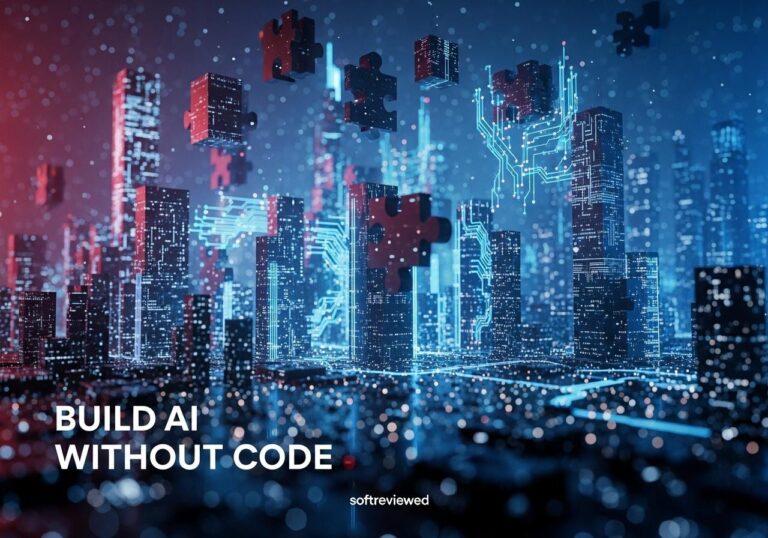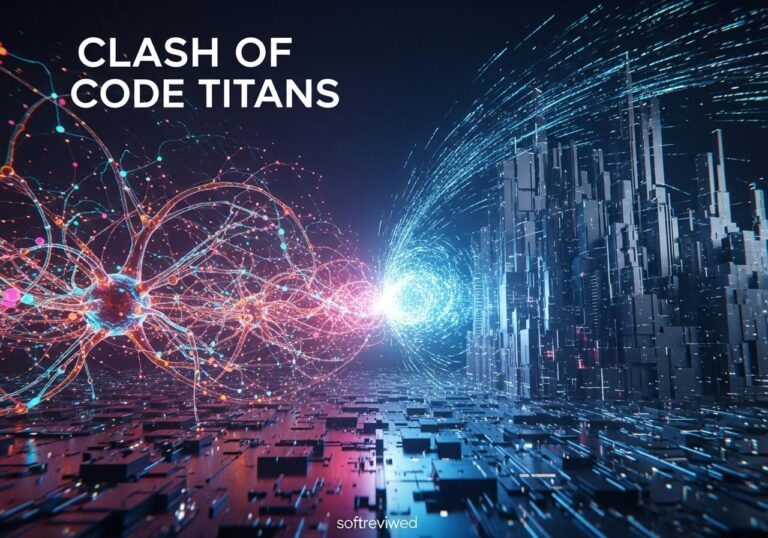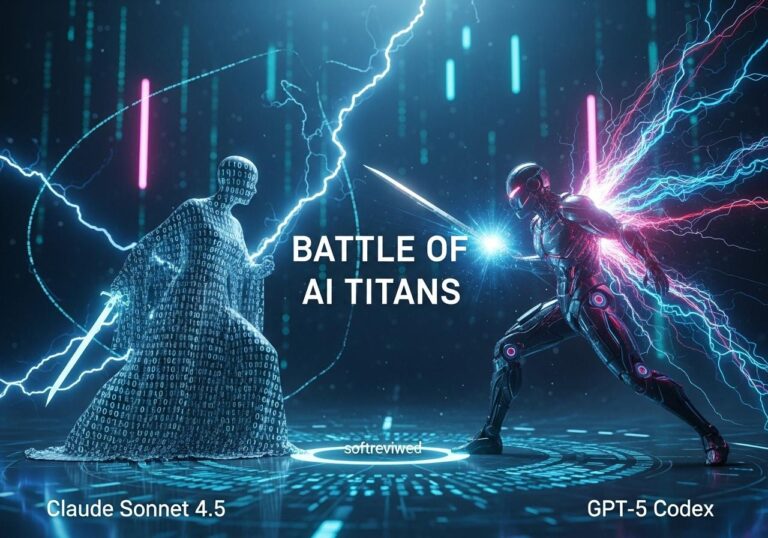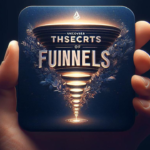🚀 NVIDIA’s LLAMA-3.1-NEMOTRON-70B-REWARD: A New AI Powerhouse
Exploring the groundbreaking performance of NVIDIA’s latest AI model in comparison to industry leaders.
🏆 Outperforming the Giants
NVIDIA’s LLAMA-3.1-NEMOTRON-70B-REWARD surpasses GPT-4 and Claude 3.5 Sonnet on all three automatic alignment benchmarks: Arena Hard, AlpacaEval 2 LC, and MT-Bench.
📊 Top Benchmark Scores
The model achieves impressive scores: Arena Hard (85.0), AlpacaEval 2 LC (57.6), and MT-Bench (8.98), setting new standards in AI performance.
🎯 Excelling in Critical Categories
LLAMA-3.1-NEMOTRON-70B-REWARD shows exceptional performance in Chat (97.5), Safety (95.1), and Reasoning (98.1) on RewardBench, demonstrating its versatility and reliability.
🧠 Innovative Training Approach
The model’s success is attributed to a combination of Bradley Terry and SteerLM Regression Reward Modeling, resulting in superior performance across various tasks.
👥 Human-Annotation Alignment
While performing similarly to other models on human-annotated benchmarks, LLAMA-3.1-NEMOTRON-70B-REWARD shows some lag in GPT-4-annotated benchmarks, highlighting areas for potential improvement.
🌐 Open-Source Triumph
Open-source models like Llama 3.1 are now surpassing proprietary counterparts such as GPT-3.5 Turbo and Google Gemini in versatility, marking a significant shift in the AI landscape.
Nvidia's Llama-3.1-Nemotron-70B-Reward: A New Benchmark in AI Performance
In a surprising development that has sent ripples through the AI community, Nvidia has quietly released an open-source fine-tuned version of Llama 3.1 that is outperforming some of the most advanced AI models on multiple benchmarks. This new model, called Llama-3.1-Nemotron-70B-Reward, is setting new standards in AI performance, surpassing even OpenAI's GPT-4 and Anthropic's Claude 3.5 Sonnet in several key metrics.
What is Llama-3.1-Nemotron-70B-Reward?

Llama-3.1-Nemotron-70B-Reward is a large language model customized by Nvidia to predict the quality of LLM-generated responses. It's based on the Llama-3.1-70B-Instruct model and has been trained using a novel approach that combines the strengths of Bradley Terry and SteerLM Regression Reward Modelling.
The model is designed to rate the quality of the final assistant turn in an English conversation of up to 4,096 tokens using a reward score. This score allows for comparison between responses to the same prompt, with higher scores indicating higher quality.
Impressive Performance Metrics
Let's dive into the numbers that are causing such excitement in the AI community:
| Benchmark | Llama-3.1-Nemotron-70B | Claude 3.5 Sonnet | GPT-4 (May 2024) |
|---|---|---|---|
| Arena Hard | 85.0 | 79.2 | 79.3 |
| AlpacaEval 2 LC | 57.6 | 52.4 | 57.5 |
| MT-Bench | 8.98 | 8.81 | 8.74 |
As we can see, Llama-3.1-Nemotron-70B consistently outperforms both Claude 3.5 Sonnet and the May 2024 version of GPT-4 across these benchmarks.
Understanding the Benchmarks
Arena Hard: This benchmark consists of 500 challenging user queries sourced from the Chatbot Arena, a crowd-sourced platform for evaluating language models.
AlpacaEval 2 LC: This metric measures performance on 805 single-turn instructional prompts, designed to reflect a diverse range of tasks and challenges faced by LLMs.
MT-Bench: This benchmark evaluates responses across 80 high-quality multi-turn questions, comparing them to a GPT-4-Turbo baseline. It assesses various aspects of conversation flow and instruction-following capabilities.
What Makes Llama-3.1-Nemotron-70B-Reward Unique?
The exceptional performance of this model can be attributed to several key factors:
RLHF using REINFORCE algorithm: The model utilizes the REINFORCE algorithm, a policy gradient method that updates the model's parameters based on feedback from human evaluators. This allows the model to learn from its mistakes and improve over time.
Novel reward models: Two specific reward models were incorporated into the training:
a) Llama-3.1-Nemotron-70B-Reward: This model assesses the quality of responses in conversational contexts, providing a reward score for the final turn of an assistant's response.
b) HelpSteer2-Preference Prompts: These prompts guide the model towards producing more helpful and relevant answers by incorporating user preferences into the training data.
Efficient parameter count: Despite its impressive performance, the model uses only 70 billion parameters, which is significantly less than some of its competitors.
Potential Applications and Impact
The release of Llama-3.1-Nemotron-70B-Reward opens up exciting possibilities for developers, researchers, and AI enthusiasts. Some potential applications include:
Enhanced conversational AI: The model's strong performance in multi-turn conversations could lead to more natural and helpful chatbots and virtual assistants.
Improved content generation: Its high scores on instructional prompts suggest it could be valuable for tasks like article writing, code generation, and creative writing.
Advanced reasoning tasks: The model's performance on complex queries indicates it could be useful for problem-solving and analytical tasks across various domains.
- Research and development: As an open-source model, it provides a valuable resource for further AI research and development.
Ethical Considerations and Challenges
While the performance of Llama-3.1-Nemotron-70B-Reward is impressive, it's important to consider the ethical implications and potential challenges:
Bias and fairness: As with all AI models, there's a need to carefully evaluate and address potential biases in the model's outputs.
Misuse potential: The model's advanced capabilities could potentially be misused for generating misleading or harmful content.
Privacy concerns: The use of such advanced language models raises questions about data privacy and the potential for unintended information disclosure.
- Resource requirements: While more efficient than some competitors, running this 70B parameter model still requires significant computational resources.
Looking to the Future
The release of Llama-3.1-Nemotron-70B-Reward represents a significant step forward in open-source AI development. It demonstrates that with innovative training techniques and careful model design, it's possible to create highly capable language models that can compete with or even surpass proprietary models from major tech companies.
As researchers and developers begin to work with this model, we can expect to see:
- Further refinements and improvements to the model architecture and training process.
- New applications and use cases leveraging the model's capabilities.
- Increased competition in the open-source AI space, potentially driving even more rapid advancements.
Does Nvidia’s Success as the World’s Most Valuable Company Impact the Development of Llama-3.1-Nemotron-70B-Reward?
Nvidia’s recent achievement, as nvidia overtakes apple, has significant implications for AI development. With increased resources and financial backing, Nvidia can propel projects like Llama-3. 1-Nemotron-70B-Reward. This advancement not only accelerates AI innovations but also sets new standards for performance and efficiency in technology across industries.
Conclusion
Nvidia's Llama-3.1-Nemotron-70B-Reward represents a significant milestone in the development of open-source large language models. Its ability to outperform some of the most advanced proprietary models on key benchmarks is a testament to the power of collaborative, open-source AI development.
As we move forward, it will be fascinating to see how this model is adopted and adapted by the AI community, and what new innovations it might inspire. While challenges remain, particularly in terms of ethical use and resource requirements, the future of open-source AI looks brighter than ever.
Performance Comparison of AI Models on Benchmarks
This chart compares the performance of Llama-3.1-Nemotron-70B-Reward against other AI models on various benchmarks. Higher scores indicate better performance.







